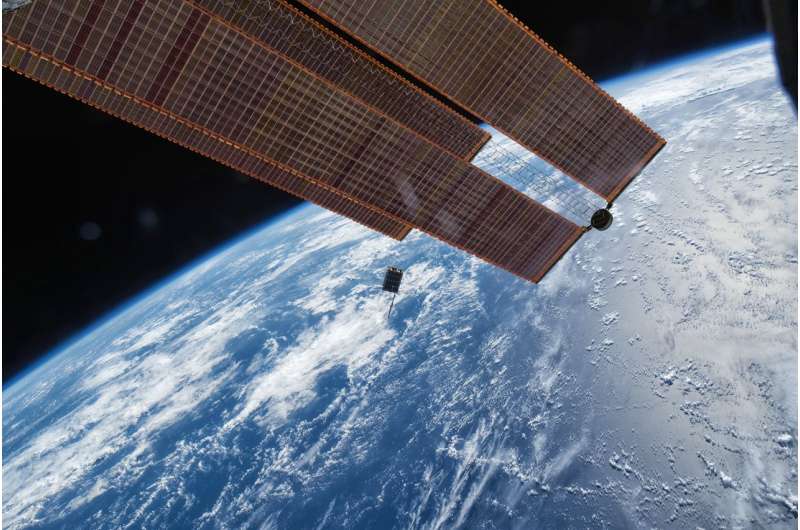Image: Release of the Dellingr CubeSat from the ISS

Dellingr, a shoebox-sized spacecraft built to show that CubeSat platforms could be cost-effective, reliable and capable of gathering highly robust science, was released from the International Space Station on Nov. 20, 2017. This image shows the release of Dellingr, which NASA specifically developed to provide high-quality science data on a small platform.
CubeSats were originally created by the California Polytechnic State University in 1999 for educational purposes and the university-class platform quickly gained popularity among universities interested in giving students hands-on experience building satellites.
In addition to their low cost, these tiny platforms intrigued scientists with their potential to fly swarms of these tiny craft around Earth or other solar system bodies to gather simultaneous, multi-point observations—an observing technique not financially feasible with larger, more traditional spacecraft.
Provided by NASA





















